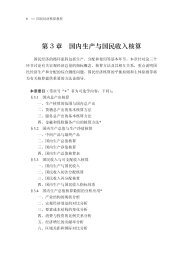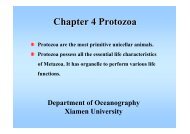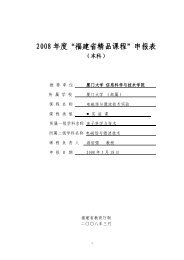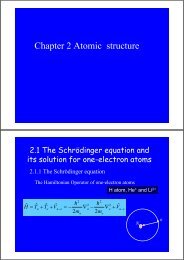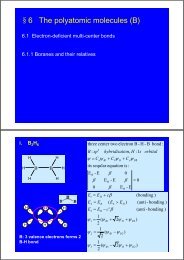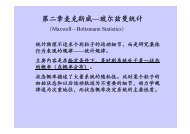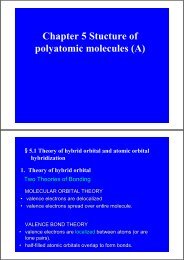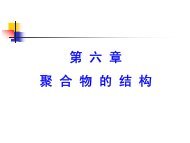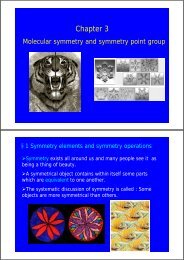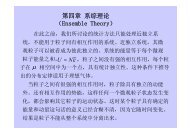user's guide â High Frequency Structure Simulator
user's guide â High Frequency Structure Simulator
user's guide â High Frequency Structure Simulator
Create successful ePaper yourself
Turn your PDF publications into a flip-book with our unique Google optimized e-Paper software.
Boundary Conditions<br />
1.1<br />
Technical Definition of Boundary Conditions<br />
Excitation – An excitation port is a type of boundary condition that permits energy<br />
to flow into and out of a structure. See the section on Excitations.<br />
Perfect E – Perfect E is a perfect electrical conductor, also referred to as a perfect<br />
conductor. This type of boundary forces the electric field (E-Field) perpendicular<br />
to the surface. There are also two automatic Perfect E assignments:<br />
Any object surface that touches the background is automatically defined to<br />
be a Perfect E boundary and given the boundary condition name outer.<br />
Any object that is assigned the material pec (Perfect Electric Conductor) is<br />
automatically assigned the boundary condition Perfect E to its surface and<br />
given the boundary condition name smetal.<br />
Perfect H – Perfect H is a perfect magnetic conductor. Forces E-Field tangential<br />
to the surface.<br />
Natural – for a Perfect H boundary that overlaps with a perfect E boundary,<br />
this reverts the selected area to its original material, erasing the Perfect E<br />
boundary condition. It does not affect any material assignments. It can be<br />
used, for example, to model a cut-out in a ground plane for a coax feed.<br />
Finite Conductivity –A Finite Conductivity boundary enables you to define the<br />
surface of an object as a lossy (imperfect) conductor. It is an imperfect E<br />
boundary condition, and is analogous to the lossy metal material definition. To<br />
model a lossy surface, you provide loss in Siemens/meter and permeability<br />
parameters. Loss is calculated as a function of frequency. It is only valid for<br />
good conductors. Forces the tangential E-Field equal to Z s (n x H tan ). The<br />
surface impedance (Z s ) is equal to, (1+j)/(δσ), where:<br />
δ is the skin depth, (2/(ωσµ)) 0.5 of the conductor being modeled<br />
ω is the frequency of the excitation wave.<br />
σ is the conductivity of the conductor<br />
µ is the permeability of the conductor<br />
Ansoft <strong>High</strong> <strong>Frequency</strong> <strong>Structure</strong> <strong>Simulator</strong> v 9.0 User’s Guide<br />
1.1-4



